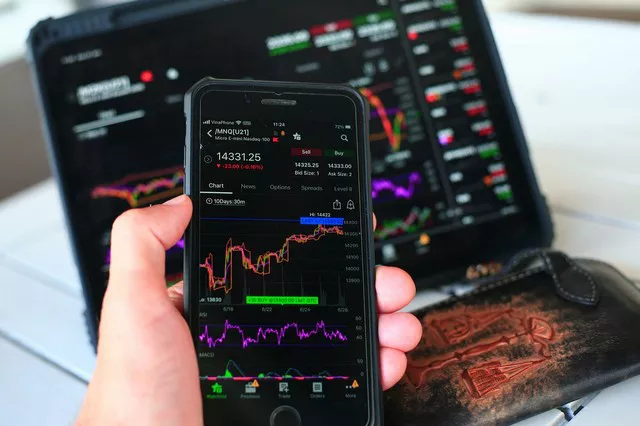In the realm of commodities trading, corn holds a significant position as one of the most traded agricultural commodities globally. From its use as a staple food to its extensive applications in biofuel production and livestock feed, corn plays a crucial role in various industries. For investors and traders looking to participate in the corn market, understanding the ticker symbol for corn futures is essential. This article delves into the intricacies of corn futures trading, exploring the ticker symbol, market dynamics, factors influencing prices, and the significance of corn futures in the broader financial landscape.
Understanding Corn Futures:
Futures contracts are standardized agreements to buy or sell a specified quantity of a commodity at a predetermined price on a future date. Corn futures operate similarly, enabling market participants to hedge against price fluctuations or speculate on future price movements of corn. These contracts are traded on commodities exchanges, with each contract representing a specific quantity of corn, typically measured in bushels.
Ticker Symbol for Corn Futures:
The ticker symbol for corn futures varies depending on the exchange where the contracts are traded. However, the most commonly used ticker symbol for corn futures in the United States is “C.” When searching for corn futures quotes or trading corn futures on futures exchanges such as the Chicago Mercantile Exchange (CME) Group, traders can use the ticker symbol “C” to identify and trade corn futures contracts.
Market Dynamics of Corn Futures Trading
Corn futures trading is influenced by a multitude of factors, ranging from supply and demand dynamics to weather conditions, government policies, and global economic trends. Understanding these market dynamics is crucial for traders to make informed decisions and effectively manage their risk exposure in corn futures markets.
Supply and Demand Dynamics:
The supply and demand fundamentals of corn, including factors such as planting acreage, crop yields, consumption patterns, and export demand, play a significant role in determining corn futures prices. Any imbalance between supply and demand can lead to price volatility in the futures market.
Weather Conditions:
Corn is highly sensitive to weather conditions, with factors such as temperature, rainfall, and growing conditions significantly impacting crop yields. Adverse weather events such as droughts, floods, or extreme temperatures can cause supply disruptions, leading to price fluctuations in corn futures markets.
Government Policies:
Government policies, including subsidies, trade tariffs, biofuel mandates, and agricultural regulations, can influence corn prices and market sentiment. Changes in government policies related to ethanol production, for example, can have a direct impact on corn futures prices.
Global Economic Trends:
Corn futures prices are also influenced by broader economic trends, including currency fluctuations, inflation rates, and geopolitical developments. Economic indicators such as GDP growth, unemployment rates, and consumer spending can affect demand for corn-based products and, consequently, corn futures prices.
Factors Influencing Corn Futures Prices
In addition to the overarching market dynamics mentioned above, several specific factors can influence corn futures prices:
Crop Reports:
Government agencies such as the U.S. Department of Agriculture (USDA) regularly release crop reports containing vital information on corn planting progress, crop conditions, and yield forecasts. These reports have a significant impact on corn futures prices as they provide insights into supply expectations.
Ethanol Demand:
The demand for corn as a feedstock for ethanol production is a crucial driver of corn futures prices, particularly in the United States, where ethanol production accounts for a substantial portion of corn consumption. Changes in ethanol demand, influenced by factors such as energy prices and government biofuel mandates, can affect corn futures prices.
Export Demand:
Corn is a globally traded commodity, with significant demand coming from countries around the world. Export demand for corn is influenced by factors such as international trade agreements, exchange rates, and competing grain supplies. Any changes in export demand can impact corn futures prices.
Technological Advancements:
Technological advancements in agriculture, including genetically modified seeds, precision farming techniques, and mechanization, can affect corn yields and production costs. Innovations in agricultural technology can influence the supply side of the corn market and, consequently, corn futures prices.
Significance of Corn Futures:
Corn futures serve several important functions within the financial and agricultural sectors:
Price Discovery:
Corn futures markets facilitate price discovery by providing a transparent platform for buyers and sellers to establish prices based on supply and demand dynamics, market sentiment, and fundamental factors. The price signals generated by corn futures markets are essential for producers, consumers, and policymakers in making informed decisions.
Risk Management:
Farmers, food processors, ethanol producers, and other stakeholders in the corn supply chain use corn futures contracts to manage price risk effectively. By hedging their exposure to price fluctuations through futures contracts, market participants can protect themselves against adverse price movements and stabilize their financial performance.
Investment Opportunities:
For investors and traders, corn futures offer a diverse range of investment opportunities, allowing them to gain exposure to the agricultural commodities market and diversify their investment portfolios. Speculative trading in corn futures also contributes to market liquidity and price efficiency.
Conclusion:
In conclusion, understanding the ticker symbol for corn futures is just the first step in navigating the complexities of corn futures trading. To succeed in the corn futures market, traders and investors must grasp the underlying market dynamics, factors influencing prices, and the significance of corn futures in the broader financial landscape. By staying informed and leveraging risk management strategies, market participants can effectively capitalize on opportunities and manage the inherent risks associated with corn futures trading.


